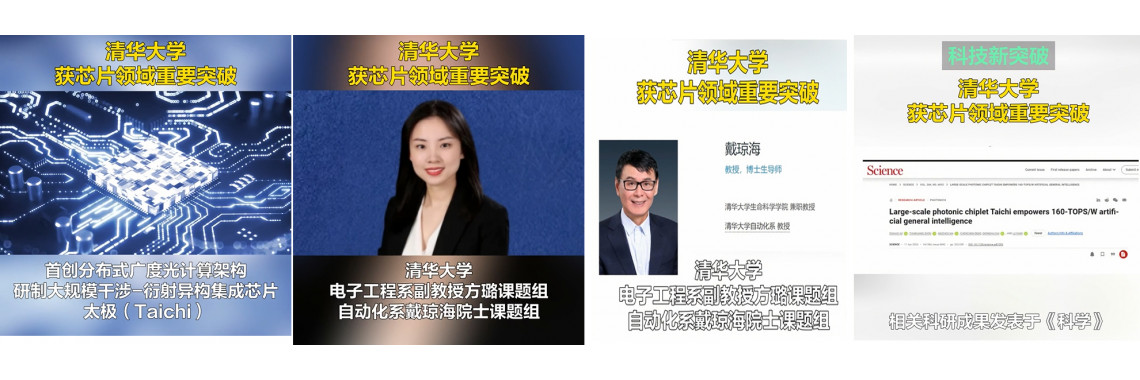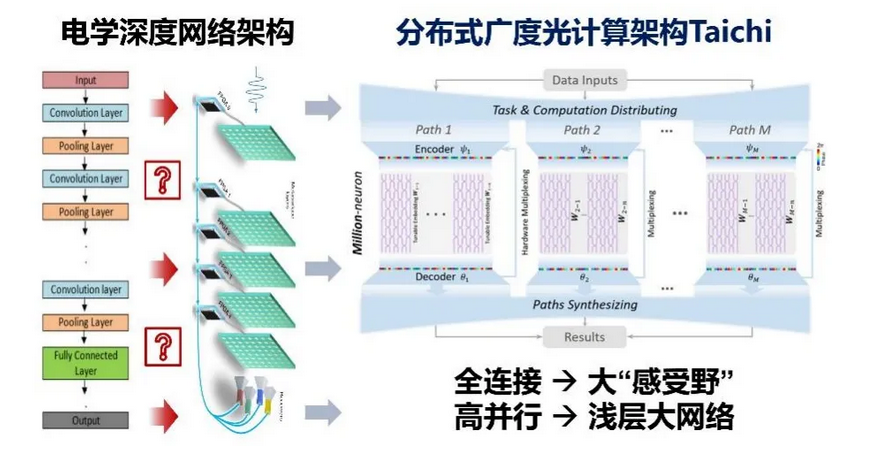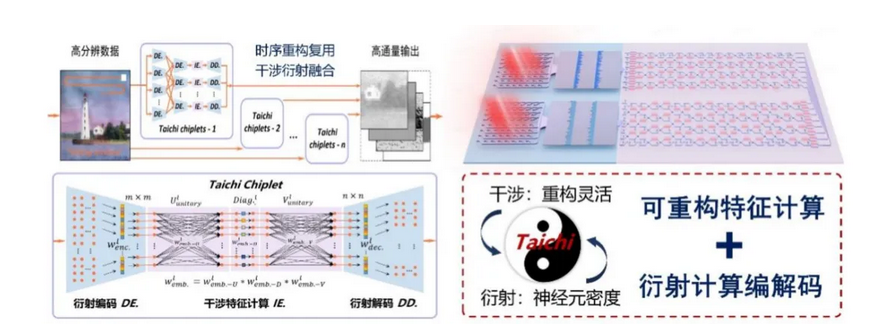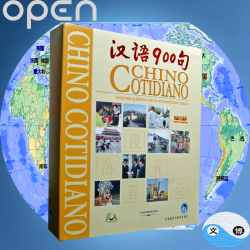Chinese scientists design large-scale photonic chiplet for artificial general intelligence

By Wenwen WANG - 12/04/2024 - 0 comments
A team of Chinese scientists has designed a revolutionary artificial intelligence (AI) chip based on photonics instead of traditional electronic transistors, paving way for large-scale photonic computing and efficient real-world AI applications. (Beijing, April 12 @Xinhuanet.com)
The rapid development of AI imposes stringent energy efficiency and area efficiency requirements on next-generation computing. Optical intelligent computing has shown great potential in achieving superior processing speeds and high energy efficiency. This is believed to be a next-generation computing paradigm that could solve the AI challenges in computing capacity and energy consumption.
However, existing optical computing has failed to realize its real potential for general-purpose intelligent computation. It can only handle simple AI tasks, such as digit classifications or small-scale pattern recognition.
The study, published on Friday in the journal Science, reported a large-scale photonic chiplet along with a distributed optical computing architecture named "Taichi." Developed by researchers from Tsinghua University, Taichi can solve advanced AI tasks with high computing capacity and high energy efficiency.
Instead of going "deeper" as electronic computing, Taichi architecture goes "broader" for throughput and scale expansion, which means larger parallel computing, according to the study.
With the help from the large-scale interference-diffraction-hybrid photonic AI chiplet, the network scale was effectively increased to billion-neuron-level, supporting a variety of advanced AGI tasks.
Taichi has achieved high accuracy in complex classification tasks, such as 100-category ImageNet and 1,623-category Omniglot datasets. It is also capable of performing high-fidelity tasks such as music composing and generating styled paintings, according to the study.
Furthermore, it has realized 160-tera-operations per second per watt energy efficiency, a substantial improvement in efficiency compared to current photonic integrated circuits, and two orders of magnitude above traditional AI chips in energy efficiency, said Fang Lu from Tsinghua University, the corresponding author of the paper.
"We anticipate that Taichi will accelerate the development of more powerful optical solutions, such as critical support for the foundation model and a new era of AGI," said Fang.
清华大学获芯片领域重要突破
科技日报记者11日从清华大学获悉,针对大规模光电智能计算难题,清华大学电子工程系副教授方璐课题组、自动化系戴琼海院士课题组,摒弃传统电子深度计算范式,另辟蹊径,首创分布式广度光计算架构,研制大规模干涉-衍射异构集成芯片太极(Taichi),实现160 TOPS/W的通用智能计算。
在如今大模型通用人工智能蓬勃发展的时代,该科研成果以光子之道,为高性能算力探索新灵感、新架构、新路径。相关科研成果发表于最新一期的国际期刊《科学》。

化“深”为“广”:分布式广度光计算架构。
智能光计算作为新兴计算模态,在后摩尔时代展现出远超硅基电子计算的性能与潜力。然而,其计算任务局限于简单的字符分类、基本的图像处理等。其痛点是光的计算优势被困在不适合的电架构中,计算规模受限,无法支撑亟须高算力与高能效的复杂大模型智能计算。

两仪一元:干涉-衍射融合计算芯片。
据介绍,太极光芯片的计算能效超现有智能芯片2—3个数量级,将可为百亿像素大场景光速智能分析、百亿参数大模型训练推理、毫瓦级低功耗自主智能无人系统提供算力支撑。
本文转自【科技日报】; ◎ 科技日报记者 华凌 赵卫华
Tags: Science and Technology, AI, photonic chiplet, artificial intelligence, Tsinghua University, Taichi
Featured
Blood Tonic Syrup
naturally relieving anemia and irregular menstruation. It helps women, blood loss recovery, the elde..
Hair Health (Wu Xu Sheng Fa Su) 72 Pills x 12
Used for premature grey hair, early white hair, thinning, dry hair, alopecia areata and hair loss af..
Vitality Plus Formula 20 cps x 6
helps restore and enhance your masculine energy, promotes sexual vigor and performance naturally. Ch..
Everyday Chinese 900 with Audio Pen -Spanish Version
Authentic language for real-life communication! Everyday Chinese enables beginning foreign learners ..













Comments
Write a comment